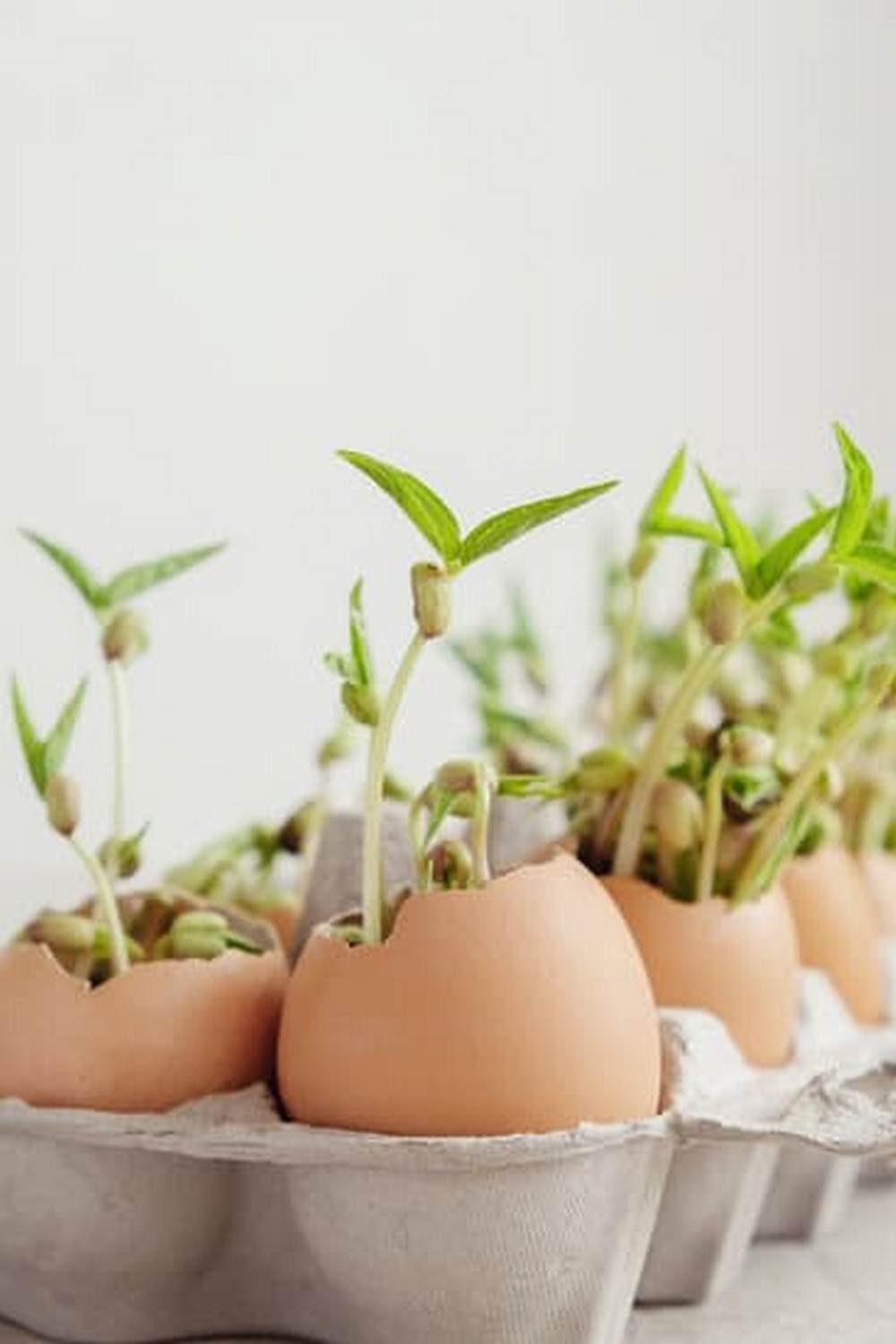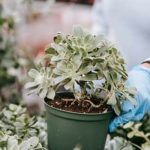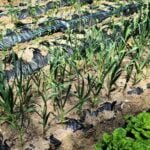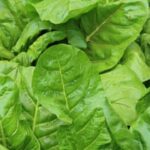Container gardening has become increasingly popular, especially for urban and small space dwellers looking to grow their own vegetables. One of the key considerations in successful vegetable container gardening is the size of the pots used. What size pots for vegetable container gardening is a common question among beginners, and in this article, we will explore the importance of pot size, factors to consider when selecting pots, size recommendations for popular vegetables, and tips for choosing the right pots.
Growing vegetables in containers offers numerous benefits, including flexibility and convenience. Whether you have limited outdoor space or simply prefer the ease of managing smaller growing areas, container gardening allows you to cultivate a variety of vegetables without needing a traditional garden plot. Additionally, container gardening can also be a solution for those who want to avoid dealing with poor soil quality or invasive pests commonly found in traditional gardens.
When it comes to selecting the right pot size for growing vegetables, there are several factors to consider. The size of the pot can have a significant impact on plant growth and productivity, as well as soil moisture and temperature management. In the following sections, we will delve into these considerations and provide specific guidelines for choosing the appropriate pot size based on the type of vegetable you wish to grow.
Choosing the Right Pot Size for Vegetables
When it comes to vegetable container gardening, choosing the right pot size is crucial for the success of your plants. The size of the pot directly impacts the growth and productivity of your vegetables, so it’s important to select pots that are suitable for the specific types of vegetables you want to grow. Here are some guidelines for selecting the appropriate size pots for different vegetables:
- Root Vegetables (carrots, radishes): For root vegetables, choose pots that are at least 12 inches deep to allow for proper root development.
- Tomatoes: Tomatoes require larger pots due to their extensive root systems. A minimum pot size of 18 inches in diameter is recommended for growing tomatoes in containers.
- Herbs: Smaller herbs like basil and parsley can thrive in smaller pots, while larger herbs like rosemary and thyme may need pots that are at least 8-12 inches in diameter.
In addition to considering the depth and diameter of the pots, it’s also important to ensure that they have adequate drainage and airflow. Proper drainage helps prevent waterlogged soil, which can lead to root rot and other issues. Additionally, the material of the pots can also impact plant growth. Terracotta and ceramic pots are porous and allow for better airflow to the roots, while plastic pots retain moisture better.
Ultimately, the right pot size will depend on the specific needs of each type of vegetable. By considering factors such as root depth, space requirements, and material properties, you can ensure that your vegetable container garden thrives and produces a bountiful harvest.
Factors to Consider When Selecting Pot Size
When considering the right pot size for growing vegetables in containers, there are several important factors to take into account. One of the key considerations is the type of vegetable being grown, as different plants have varying space and root depth requirements. For example, larger plants like tomatoes and peppers will need larger pots to accommodate their extensive root systems, while smaller plants like lettuce and herbs can thrive in more compact containers.
Another important factor to consider is drainage and airflow within the pots. Proper drainage is essential for preventing waterlogged soil, which can lead to root rot and other issues. Additionally, sufficient airflow around the roots is crucial for healthy plant growth. This means selecting pots with drainage holes at the bottom and ensuring that the chosen pot material allows for proper air circulation.
The material of the pots also plays a significant role in plant growth. Different materials have varying levels of insulation, which can impact soil moisture and temperature management. For example, terracotta pots are porous and allow for better airflow, but they also dry out quicker than plastic or metal containers. Understanding how different materials affect soil conditions can help in selecting the most suitable pots for specific vegetables.
| Vegtable | Recommended Pot Size (Diameter X Depth) |
|---|---|
| Tomatoes | 18-24 inches x 12-18 inches |
| Peppers | 12-16 inches x 10-12 inches |
| Lettuce | 8-12 inches x 8-10 inches |
By taking these factors into consideration when selecting pot sizes for vegetable container gardening, you can effectively support healthy plant growth and maximize the productivity of your crops.
Size Recommendations for Popular Vegetables
When it comes to growing vegetables in containers, choosing the right pot size is crucial for the success of your plants. Different vegetables have varying space and root depth requirements, so it’s essential to select pots that will provide enough room for growth. Here are some guidelines for selecting the appropriate pot size for specific vegetables:
- Tomatoes: For indeterminate varieties, such as cherry and heirloom tomatoes, choose pots that are at least 18 inches deep and 18 inches in diameter. Determinate varieties, like patio or dwarf tomatoes, can thrive in slightly smaller pots, around 12-16 inches deep and wide.
- Peppers: Bell peppers and hot peppers require pots that are at least 12-14 inches deep and wide. Small varieties, like chili peppers, can be grown in slightly smaller pots, around 8-10 inches in depth and width.
- Lettuce: This leafy green thrives in shallow pots that are around 6-8 inches deep and wide. Since lettuce has a shallow root system, it doesn’t require as much vertical space as other vegetables.
It’s important to consider the specific needs of each vegetable when determining pot size. Understanding the space requirements and root depth of different vegetables will help you provide the optimal growing environment for your container garden.
In addition to considering the size of the pot itself, it’s also important to maximize space within the container. Using trellises or stakes for vertically-growing plants like tomatoes can help make the most of limited space.
Additionally, planting smaller or trailing plants around larger ones can make efficient use of the available area within a single container. By carefully selecting the right pot sizes and optimizing space within them, you can create a productive and bountiful vegetable container garden.
Tips for Choosing the Right Pots
When it comes to choosing the right pots for vegetable container gardening, there are several factors to consider in order to ensure the optimal growth and productivity of your plants. The size of the pot plays a critical role in providing adequate space for root development and support for the overall growth of the vegetable. Understanding the guidelines for selecting the appropriate pot size for specific vegetables is essential for successful container gardening.
Importance of Pot Size
The size of the pot directly impacts the health and productivity of your vegetable plants. Larger pots provide more space for root expansion, allowing the plants to access more nutrients and water from the soil. On the other hand, smaller pots may restrict root growth, leading to stunted plants and reduced yields. Understanding how different vegetables require varying amounts of space and root depth is crucial in determining the right pot size for each plant.
Selecting Pot Material
In addition to size, the material of the pot can also impact plant growth. For example, terracotta pots allow moisture to evaporate more quickly compared to plastic or metal containers, which can affect soil moisture levels and plant hydration. It’s important to consider factors such as drainage, insulation, and durability when selecting pots for container gardening. Furthermore, choosing lightweight materials may be beneficial for those looking to move their containers around or create vertical gardens.
Tips for Maximizing Space
For small or limited growing spaces, utilizing creative solutions can maximize productivity. Choose compact varieties of vegetables that can thrive in smaller pots while still producing significant yields. Additionally, incorporating vertical growing techniques such as trellises or hanging baskets can optimize space utilization and expand your container garden vertically rather than horizontally.
By carefully considering these tips for choosing the right pots for vegetable container gardening, you can set yourself up for a successful and productive harvest regardless of your available space. Understanding how pot size impacts plant health and growth is essential in creating an ideal environment for your vegetable garden to flourish. With proper selection and maintenance of pots, you can enjoy fresh homegrown produce even in small or urban settings.
Small Space Gardening With Containers
Urban and small space dwellers often face the challenge of limited outdoor gardening space. However, container gardening offers a solution for individuals with minimal space for traditional garden beds. By utilizing pots and containers, individuals can still enjoy growing their own vegetables, herbs, and fruits. Container gardening is not only a practical solution for small spaces but also provides the flexibility to relocate plants as needed.
Maximizing Vertical and Compact Growing Space
One of the advantages of container gardening in small spaces is the ability to maximize vertical growing space. Utilizing trellises, hanging baskets, and tiered plant stands can help expand the available growing area. Vining vegetables such as tomatoes, cucumbers, and peas can be trained to grow vertically, making efficient use of limited space.
Additionally, compact varieties of vegetables are ideal for container gardening in small spaces. For example, bush-type varieties of zucchini and squash require less horizontal space compared to their sprawling counterparts. Similarly, dwarf or miniature fruit tree varieties can thrive in containers on patios or balconies.
Examples of Successful Container Gardens in Limited Spaces
Container gardening has seen a surge in popularity among urban dwellers seeking to grow their own fresh produce in limited areas. From rooftop gardens to balcony planters, there are numerous examples of successful container gardens in small spaces. Community gardens may also offer opportunities for individuals without access to private outdoor space to participate in shared container gardening initiatives.
Many urban gardening enthusiasts have embraced creative solutions such as repurposed containers like buckets, crates, and even recycled materials like PVC pipes and plastic bottles. These innovative approaches demonstrate that with careful planning and attention to pot size and placement, even the smallest outdoor setting can support a thriving vegetable garden.
Container gardening offers a versatile and accessible way for individuals with limited outdoor space to cultivate a productive edible garden while enjoying the benefits of hands-on cultivation and harvest. By utilizing vertical growing techniques and selecting appropriate pot sizes for specific vegetables, small-space gardeners can experience success with container gardening regardless of their limitations in square footage.
Common Mistakes to Avoid
Choosing the right pot size for vegetable container gardening is crucial to the health and productivity of your plants. One common mistake that many gardeners make is using pots that are too small for their vegetables. The size of the pot directly impacts the growth and development of the plant, so it’s important to select the appropriate size for each type of vegetable you plan to grow.
So, what size pots for vegetable container gardening? It depends on the specific vegetable you are growing. For example, larger vegetables such as tomatoes and peppers require larger pots to accommodate their root systems and provide adequate space for growth. On the other hand, smaller vegetables like lettuce or herbs can thrive in smaller pots. It’s important to research the specific requirements of each vegetable to ensure you are providing them with the proper environment to flourish.
In addition to pot size, it’s also essential to consider factors such as drainage, airflow, and material when selecting pots for your container garden. Proper drainage is crucial for preventing waterlogged soil, which can lead to root rot and other problems.
The material of the pot can impact soil moisture and temperature, so it’s important to choose a material that best suits the needs of your plants. By taking these factors into consideration, you can avoid common mistakes that may hinder your vegetable container gardening efforts.
| Vegetable | Recommended Pot Size (Inches) |
|---|---|
| Tomatoes | 12-24 inches in diameter |
| Peppers | 10-16 inches in diameter |
| Lettuce | 6-12 inches in diameter |
Conclusion
In conclusion, the size of pots used for vegetable container gardening plays a crucial role in the success and productivity of the plants. The right pot size can impact plant growth, root development, and overall health.
As discussed in this article, selecting the appropriate pot size for specific vegetables is essential for maximizing space and ensuring optimal conditions for growth. By considering factors such as drainage, airflow, and material, gardeners can make informed decisions when choosing pots for their container garden.
It is important to remember that different types of vegetables have varying space requirements and root depths. Therefore, referring to the guidelines provided for specific vegetables can help gardeners make informed choices when it comes to pot sizes. Additionally, considering alternative options such as self-watering containers and grow bags can offer additional benefits for successful container gardening in limited spaces.
In order to thrive in urban environments or small living spaces, container gardening provides a convenient solution for growing fresh produce at home. Whether it’s on a balcony, patio, or windowsill, creative solutions for maximizing vertical and compact growing space can be employed to create thriving container gardens. The flexibility and convenience offered by container gardening make it an accessible option for individuals with limited outdoor space.

If you’re looking to get into vegetable gardening, or are just looking for some tips on how to make your current garden better, then you’ve come to the right place! My name is Ethel and I have been gardening for years. In this blog, I’m going to share with you some of my best tips on how to create a successful vegetable garden.





